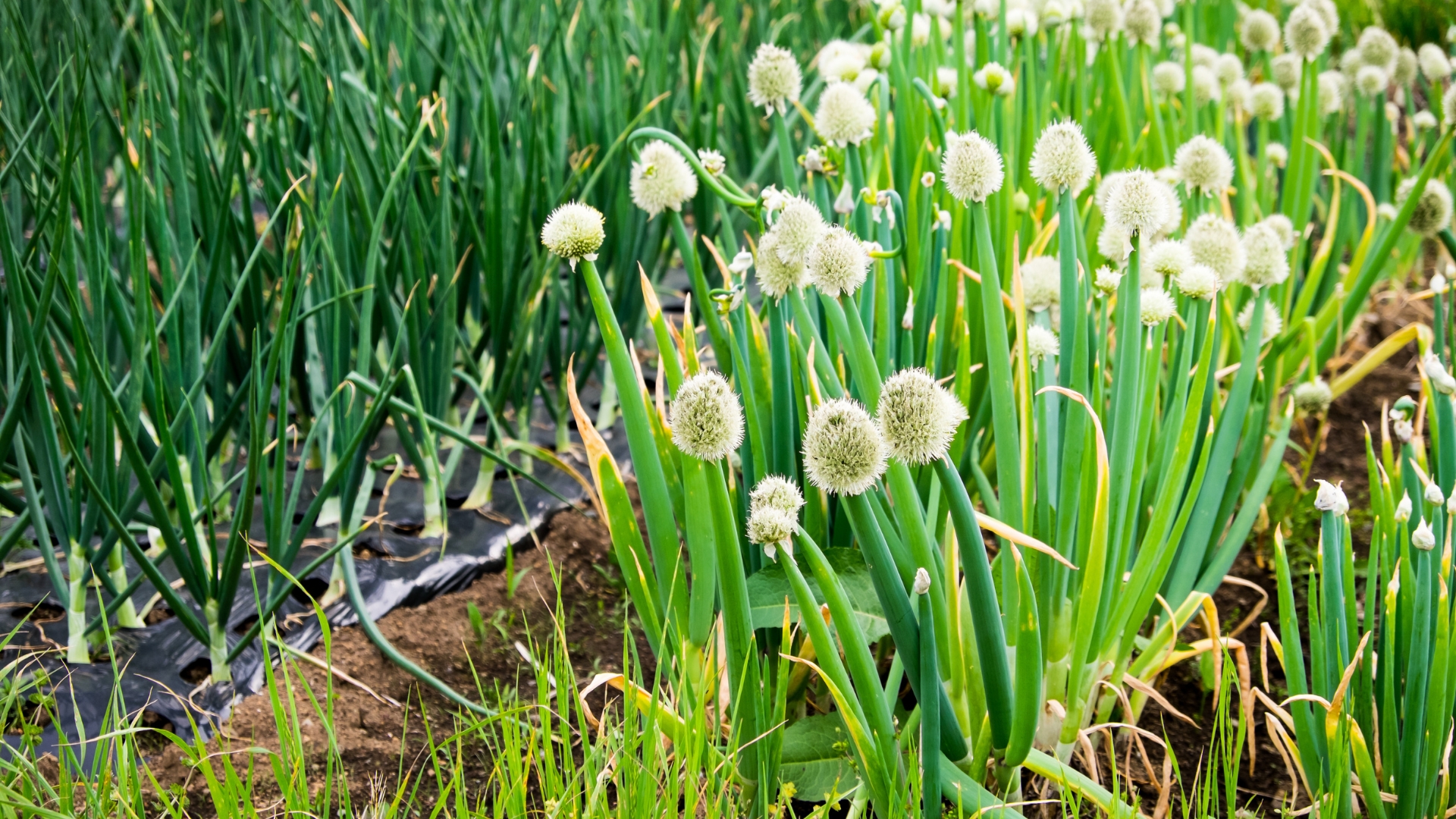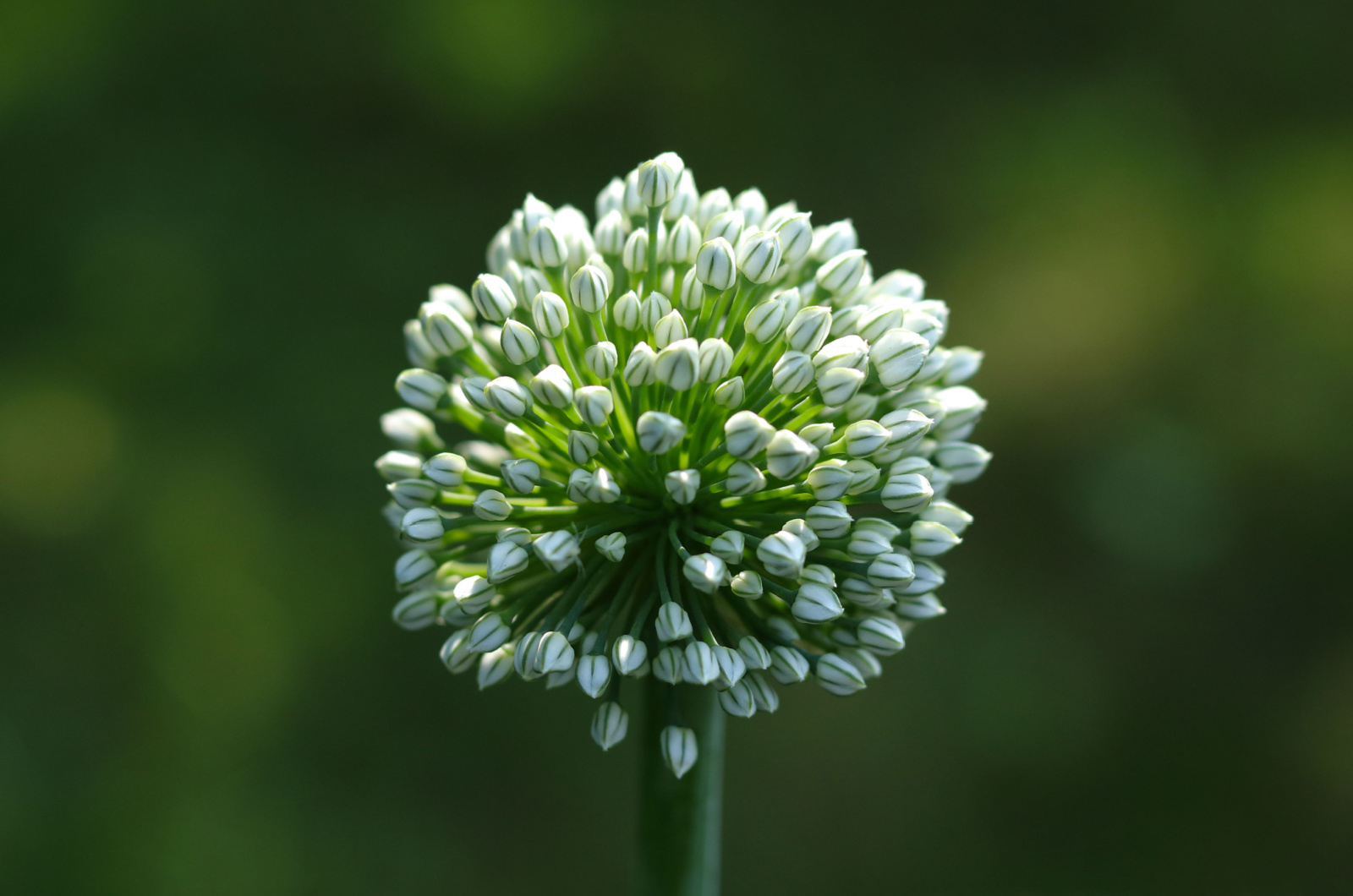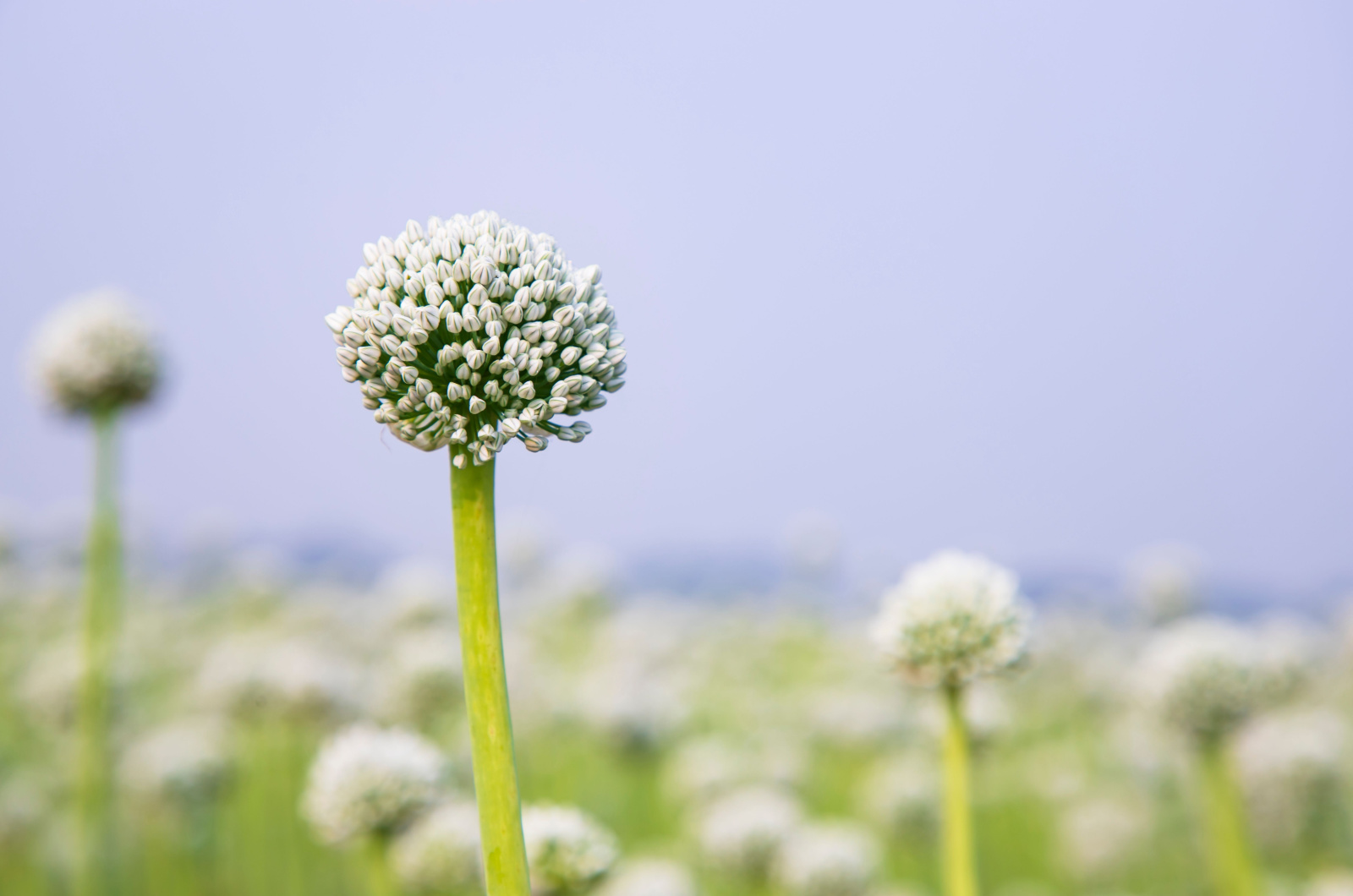When you enter the gardening world, some things may surprise you, and many of them are related to the strange behavior of your green buddies.
One of the examples is an onion that has generated blossoms. Well, we definitely don’t cultivate this veggie for its beauty but rather for its distinctive flavor.
This condition is referred to as bolting, and there’s a reason why it happens.
If you’re worried about it, here’s what it means if your onion plant starts flowering!
Why It Happens
Onions are veggies classified as biennials, which means they’re supposed to produce flowers at the end of the second growing season. If this happens before the expected time, you’re dealing with a bolting onion.
This condition is primarily caused by environmental stress because veggies such as onions are pretty delicate and can’t withstand changes in their surroundings.
If there’s a sudden change in their environment, onions feel like they’re threatened, so they need to do something to survive. Instead of focusing on bulb production, onions enter the flowering growth stage.
This can be described as some sort of survival mechanism, and it should serve us as a reminder that our plants are tough and will respond to changes around them.
What To Do With Bolted Onion Plants
Well, it’s completely normal to feel surprised and stressed if you find bolted onions in your garden. Your onions are using all their energy to generate seeds, which highly affects bulb development and, consequently, the long-expected harvest.
But don’t let this discourage you; there’s still time to save the yield!
The first thing you need to do is remove the onions from the ground. I know how weird this sounds, but leaving onions in the ground will just enhance further seed production.
Now you have two options: to remove the flower from the plant or the entire bolted stems. Bear in mind that this method won’t reverse the changes, but it will prevent further damage.
Since there weren’t any symptoms and your onions are ready for picking, I’m sure you’re wondering what to do with them. The good news is that they’re still edible, and even though the flavor may not be the same as for mature onions, it’s still great.
There are many recipes where you can include bolted plants and you most likely won’t notice the difference.
How To Prevent Bolting In Onions
If you don’t want to pick your onions earlier, and want them to have full flavor, you should know the ways to prevent bolting.
It’s essential to understand the behavior of onions and their sensitivity to environmental changes. Ensuring the ideal conditions for these veggies is the best way to prevent bolting.
Some varieties are more susceptible to bolting, which is why I recommend consulting with professionals before purchasing onions. Alternatively, you can buy heat-treated cultivars because they’re less prone to bolting.
Choosing the right time to sow onion seeds is another way to prevent bolting. Check the date of the first expected frost and plan on planting your onions about a month before.
One of the crucial aspects of onion care is the correct watering schedule. Overwatering and underwatering can both stress the plant, which can result in bolting. So make sure to irrigate it once a week, paying attention to rainfall.
Another thing you should do is protect your onion plants from harsh weather conditions. Heat waves or unexpected drops in temperature can lead to bolting, so make sure to install row covers or similar tools for protection.
Finally, be careful when handling these veggies. They may look resilient but onions are, in fact, sensitive and any damage can trigger them to protect themselves and bolt as a result.



